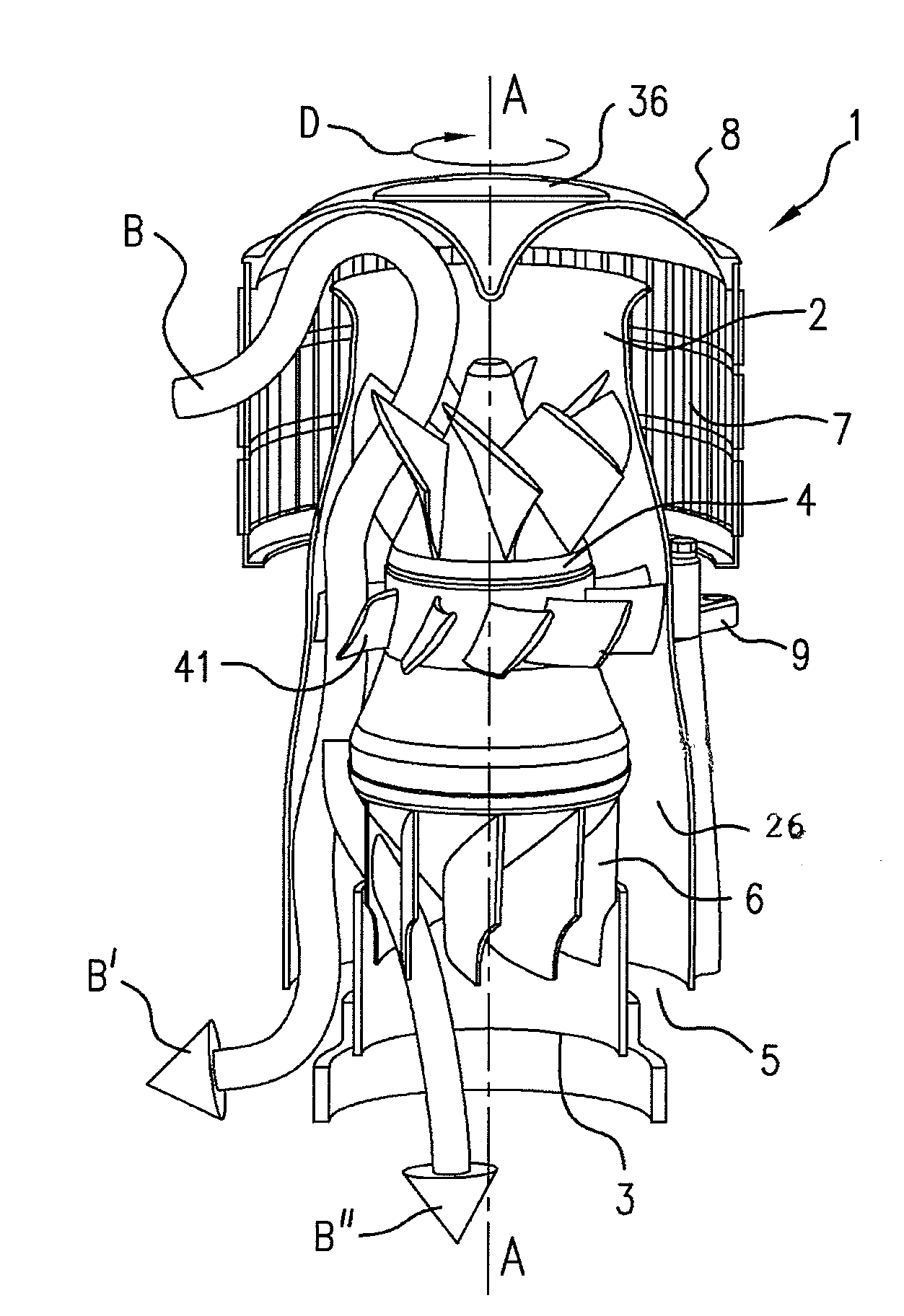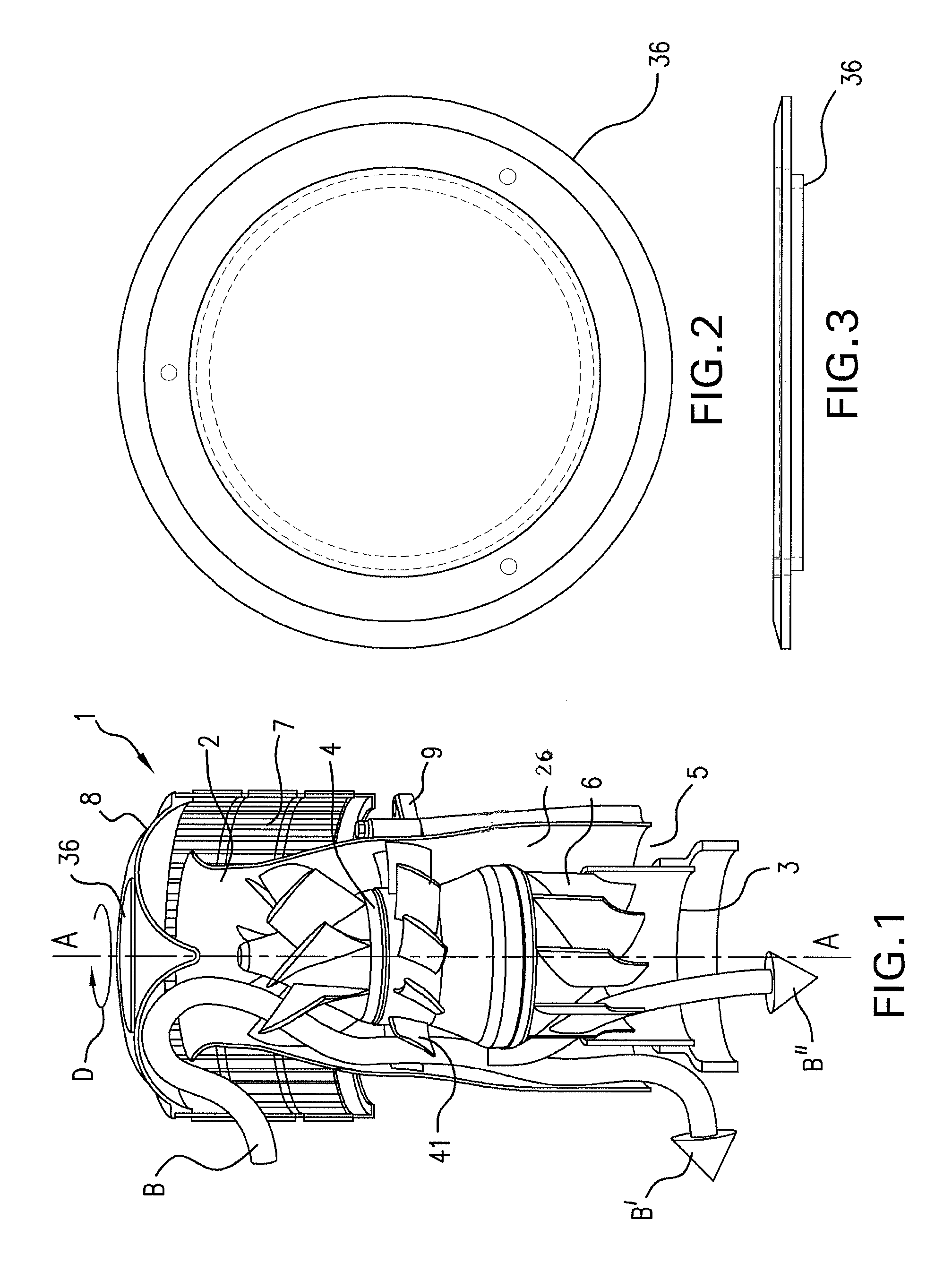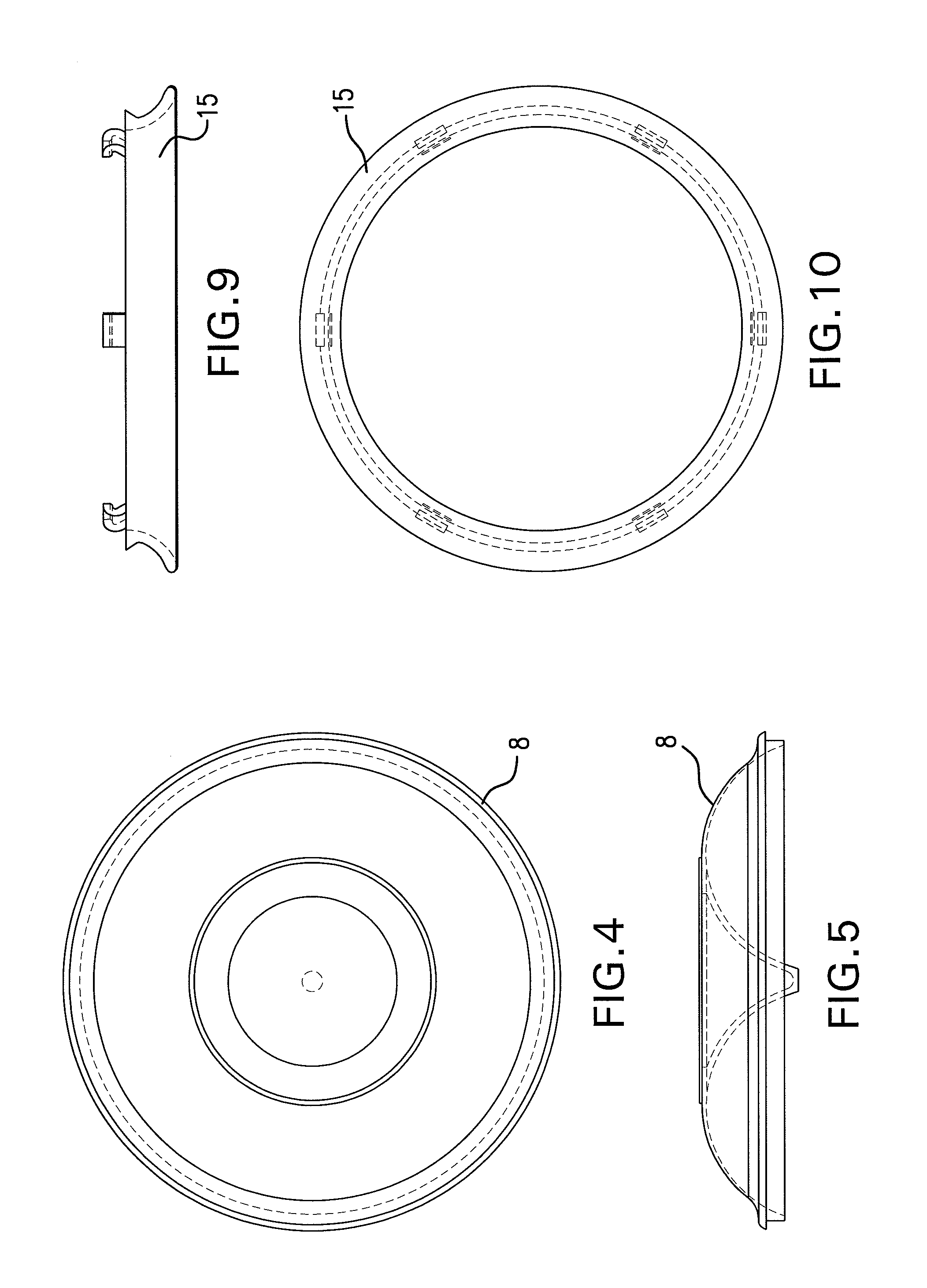Powered air cleaning system and air cleaning method
a technology of air cleaning system and air cleaning method, which is applied in the direction of liquid degasification, auxillary pretreatment, separation processes, etc., can solve the problems of increasing the restriction of airflow through the filter, increasing the cost of operation, and reducing so as to reduce the operating performance of an associated device and increase the cost of operation.
- Summary
- Abstract
- Description
- Claims
- Application Information
AI Technical Summary
Benefits of technology
Problems solved by technology
Method used
Image
Examples
Embodiment Construction
[0040]Referring now to the drawings, the powered air cleaning system 1 comprises a flow path shown by the arrows B, B′ and B″ in FIG. 1 extending through the system from an inlet 2 to an outlet 3. A motor-driven, turbine-type fan 4 is located along the flow path to draw particulate debris laden air into the inlet and rotate it about a longitudinal axis A-A of the system to form a rotating flow that stratifies the debris laden air with the heaviest particles in the outermost orbits of the rotating flow. An ejector port 5 is provided for ejecting particulate debris laden air, B′, from the stratified rotating flow in the system. A plurality of stationary de-swirl blades 6, concavely curved radially in a direction opposite the direction of the rotating flow in the system, are located within the rotating flow centered in the outlet 3 for aerodynamically redirecting clean air from the innermost orbits of the stratified rotating flow toward and through the outlet; see arrow B″. This result...
PUM
| Property | Measurement | Unit |
|---|---|---|
| length | aaaaa | aaaaa |
| outer diameter | aaaaa | aaaaa |
| pressure | aaaaa | aaaaa |
Abstract
Description
Claims
Application Information
 Login to View More
Login to View More - R&D
- Intellectual Property
- Life Sciences
- Materials
- Tech Scout
- Unparalleled Data Quality
- Higher Quality Content
- 60% Fewer Hallucinations
Browse by: Latest US Patents, China's latest patents, Technical Efficacy Thesaurus, Application Domain, Technology Topic, Popular Technical Reports.
© 2025 PatSnap. All rights reserved.Legal|Privacy policy|Modern Slavery Act Transparency Statement|Sitemap|About US| Contact US: help@patsnap.com



